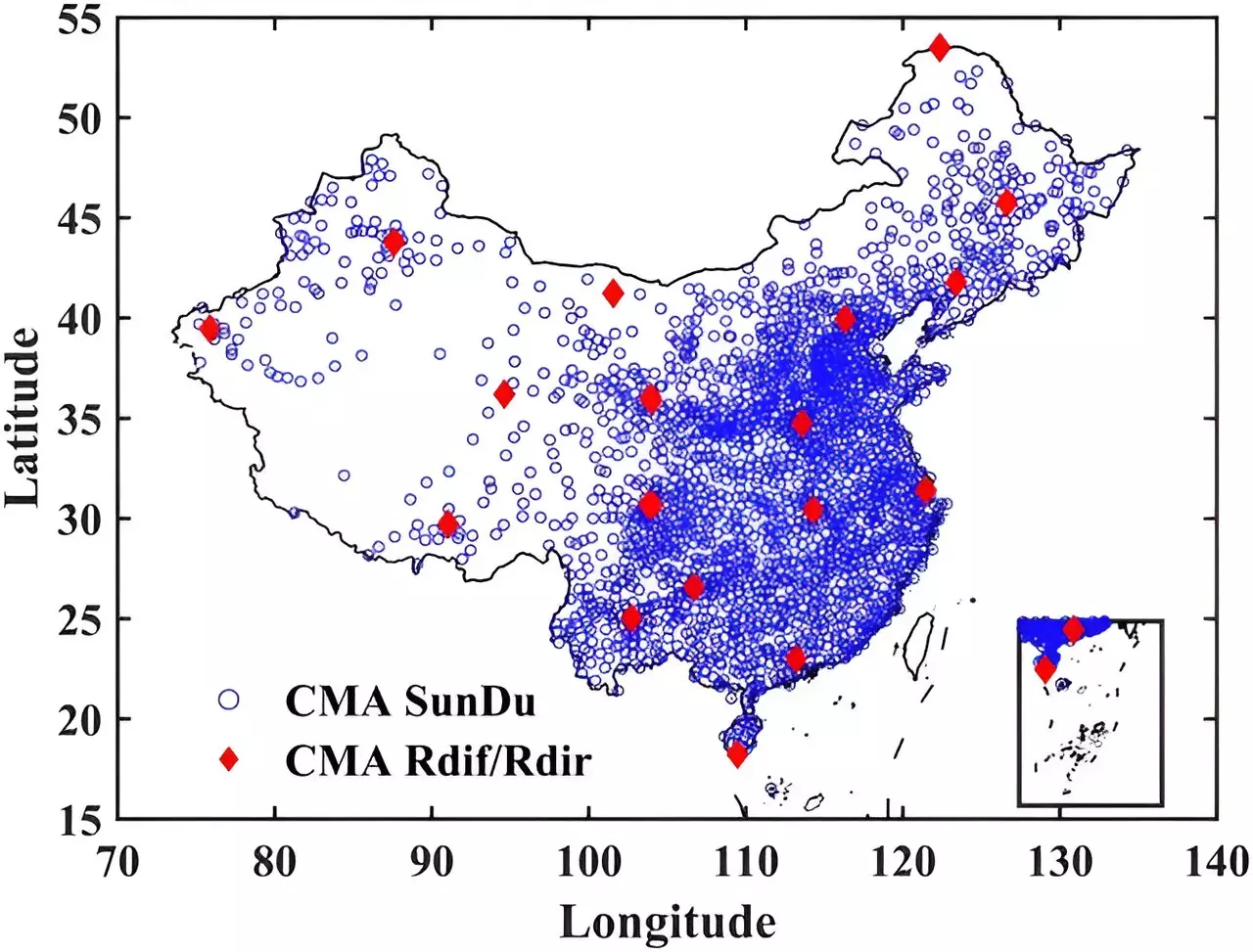Solar radiation estimation plays a crucial role in the development and optimization of solar energy production systems. In a recent study published in the Journal of Remote Sensing, researchers have introduced a novel approach that combines data augmentation with the LightGBM machine learning model to accurately estimate both diffuse and direct solar radiation. This groundbreaking research utilizes sunshine duration data from a vast network of weather stations in China to overcome the limitations of traditional ground-based observations.
The core of this study lies in the innovative application of machine learning algorithms trained on augmented datasets to predict solar radiation components with unparalleled accuracy. By leveraging over 2,453 weather stations, the researchers were able to create a comprehensive dataset that captures the spatial distribution of solar radiation components. What sets this methodology apart is its independence from local ground truth data for calibration, making it a universally applicable solution for solar radiation estimation.
The validation of this model against independent datasets not only reaffirms its effectiveness within China but also highlights its potential for global application. Furthermore, the development of a new satellite-based dataset as a result of this study offers superior accuracy and detailed spatial analysis of solar radiation components. This dataset is a valuable resource for advancing solar energy research and deployment, providing insights that can enhance the efficiency and optimization of solar energy production systems.
Professor Kun Yang, the lead researcher from Tsinghua University, emphasized the significant enhancement in accuracy and applicability of solar radiation estimates achieved through this method. This not only paves the way for optimized solar energy utilization in China but also holds promise for global applications. The establishment of a new standard for solar radiation estimation sets a precedent for future research in the field, signaling a groundbreaking shift towards more efficient and strategic solar energy implementation.
The integration of data augmentation and machine learning in solar radiation estimation represents a significant advancement in the renewable energy sector. The creation of a high-precision satellite-based dataset opens up new possibilities for site selection and system optimization, particularly in regions with abundant solar energy potential. This research sets the stage for continued innovation in solar energy research and contributes to the ongoing transition towards sustainable and clean energy sources.


Leave a Reply